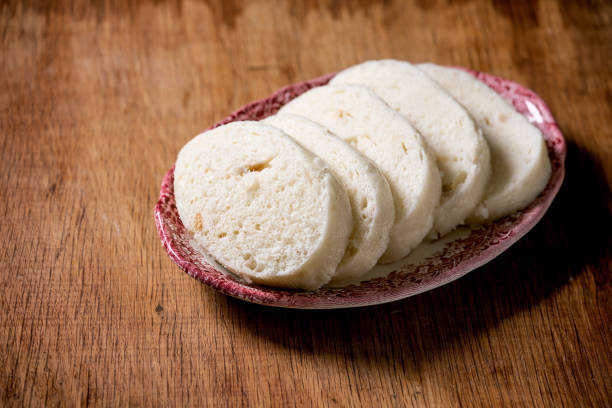Steamed bread, or “ujeqe” as it’s known in some South African cultures, is a delightful and spongy bread that’s not baked in the traditional sense but steamed.
This method of cooking bread imparts a unique texture and taste, making it a favorite in many households.
This blog post is designed to take you through the process of making your very own steamed bread, tailored for those who are new to the kitchen.
We’ll cover everything from ingredients to the steaming process, ensuring you have all the knowledge needed to add this delicious bread to your culinary repertoire.
Ingredients
Before we dive into the method, let’s start with what you’ll need.
This recipe is designed to serve 4-6 people, making it perfect for a family meal.
- White bread flour: 500g (about 4 cups) – It’s important to use bread flour as it has a higher protein content, which will give your bread a better structure.
- Instant yeast: 10g (2 teaspoons) – Yeast is what will make your bread rise and give it that lovely, light texture.
- Sugar: 30g (about 2 tablespoons) – Sugar not only adds a hint of sweetness but also feeds the yeast, helping your bread rise.
- Salt: 5g (1 teaspoon) – Salt adds flavor and controls yeast activity, ensuring your bread doesn’t rise too quickly.
- Warm water: Approximately 300ml (about 1¼ cups) – The temperature of the water should be around 35-40°C (95-104°F), warm enough to activate the yeast but not so hot that it kills it.
Equipment
- Large mixing bowl: For combining your ingredients.
- Wooden spoon or Dough whisk: For stirring your dough.
- Clean kitchen towel: To cover your dough while it rises.
- Steamer basket or Colander: To hold your bread over the water.
- Large pot with lid: Must be large enough to fit your steamer basket or colander.
- Parchment paper: To line the steamer basket, preventing the bread from sticking.
Method
Preparing the Dough
- Mix Dry Ingredients: In your large mixing bowl, combine the flour, yeast, sugar, and salt. Mix these thoroughly to ensure the yeast is well distributed throughout the flour.
- Add Warm Water: Gradually add warm water to the dry mixture while stirring with your wooden spoon or dough whisk. You’re aiming for a dough that’s soft and slightly sticky but manageable. You might not need all the water, so add it gradually until the right consistency is achieved.
- Knead the Dough: Once your dough has formed, turn it out onto a lightly floured surface and knead for about 10 minutes. Kneading is crucial as it develops the gluten in the flour, giving your bread structure and elasticity.
- First Rise: Place your kneaded dough back into the mixing bowl and cover it with a clean kitchen towel. Let it rise in a warm place until it has doubled in size, which should take about 1-1.5 hours.
Shaping and Second Rise
- Punch Down: After the first rise, gently punch down your dough to release any air bubbles.
- Shape: Form your dough into a round shape that will fit inside your steamer basket or colander. If you’re using a colander, ensure it’s lined with parchment paper to prevent sticking.
- Second Rise: Place your shaped dough into the steamer basket or lined colander, cover it with the kitchen towel, and let it rise again for about 30 minutes. It should puff up nicely but won’t quite double in size.
Steaming the Bread
- Prepare Your Steamer: Fill your large pot with about 2 inches of water and bring it to a simmer. Make sure the water level is low enough that it won’t touch the bread when it’s placed in the steamer.
- Steam: Once the water is simmering, place your steamer basket or colander with the dough into the pot. Ensure the lid is tightly closed to keep the steam inside. Steam your bread for about 30 minutes. Avoid lifting the lid during this time as the trapped steam is what cooks your bread.
- Check for Doneness: After 30 minutes, remove the lid and check if the bread is done. It should sound hollow when tapped on the bottom. If it’s not quite there, steam for an additional 5-10 minutes.
Serving Your Steamed Bread
Your steamed bread is best enjoyed warm, fresh out of the steamer. It pairs wonderfully with soups, stews, or simply slathered with butter and jam.
This process might seem daunting at first, especially if you’re new to cooking, but each step you take builds your skills and confidence in the kitchen.
Cooking is as much about the journey as it is about the delicious results.
Congratulations! You’re becoming a better cook with every loaf you make!

